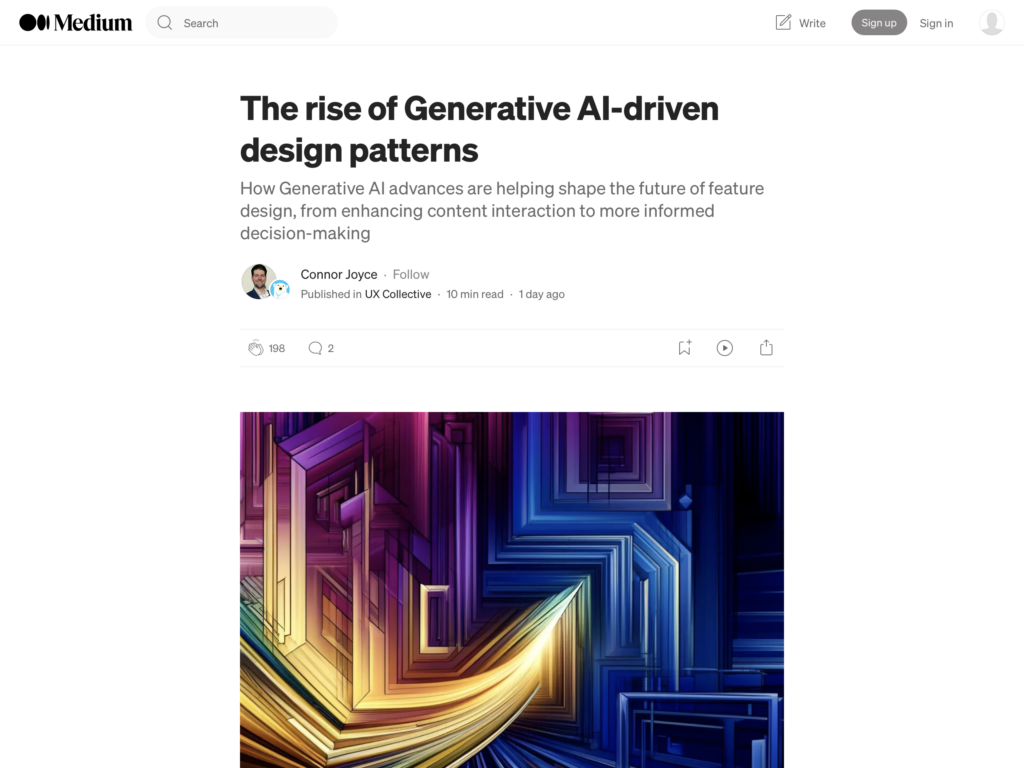In the ever-evolving design world, a new frontier is emerging—one driven by the power of Generative Artificial Intelligence (AI). As the ChatGPT revolution continues to send shockwaves through the tech community, its impact on the design industry is becoming increasingly apparent. Over the past year, teams across various sectors have been scrambling to harness the potential of this groundbreaking technology, and the results are nothing short of remarkable.
One of the most exciting developments in this space is the rise of Generative AI-driven design patterns. These patterns leverage the power of machine learning algorithms to create unique, innovative designs that push the boundaries of what's possible. By analyzing vast amounts of data and identifying patterns and trends, Generative AI can produce designs that are not only visually stunning but also highly functional and user-friendly.
According to a recent survey by the Design Management Institute, 68% of design professionals believe that Generative AI will significantly impact their industry in the coming years. Furthermore, 45% of respondents stated that they are already experimenting with Generative AI tools in their work.
So, what exactly are Generative AI-driven design patterns, and how do they work? At their core, these patterns rely on algorithms that can generate new designs based on a set of predefined rules and constraints. By inputting specific parameters such as color schemes, typography, and layout preferences, designers play a crucial role in guiding Generative AI to create a wide range of variations on a theme, making them feel valued and integral to the design process.
One of the key empowering benefits of this approach is that it allows designers to explore a much broader range of possibilities than they could through traditional methods. Rather than spending hours or even days iterating on a single design, Generative AI can produce hundreds or even thousands of variations in a matter of minutes. This not only saves time but also encourages designers to take the reins of experimentation and innovation, feeling more in control and capable.
Another advantage of Generative AI-driven design patterns is that they can help eliminate bias and subjectivity from the design process. By relying on data and algorithms rather than personal preferences or intuition, designers can create more objective, evidence-based designs optimized for user experience and engagement.
Of course, as with any new technology, there are also challenges and limitations. One potential concern is that Generative AI could lead to a homogenization of design, with algorithms producing similar patterns and layouts across different brands and industries. Additionally, there may be a learning curve for designers who are used to more traditional methods and tools.
Despite these challenges, however, the rise of Generative AI-driven design patterns represents an exciting new frontier for the design industry. As more and more companies and individuals begin to experiment with these tools and techniques, we can expect to see a wave of innovation and creativity that will not only shape but also inspire the future of design for years to come.
https://uxdesign.cc/the-rise-of-generative-ai-driven-design-patterns-177cb1380b23
